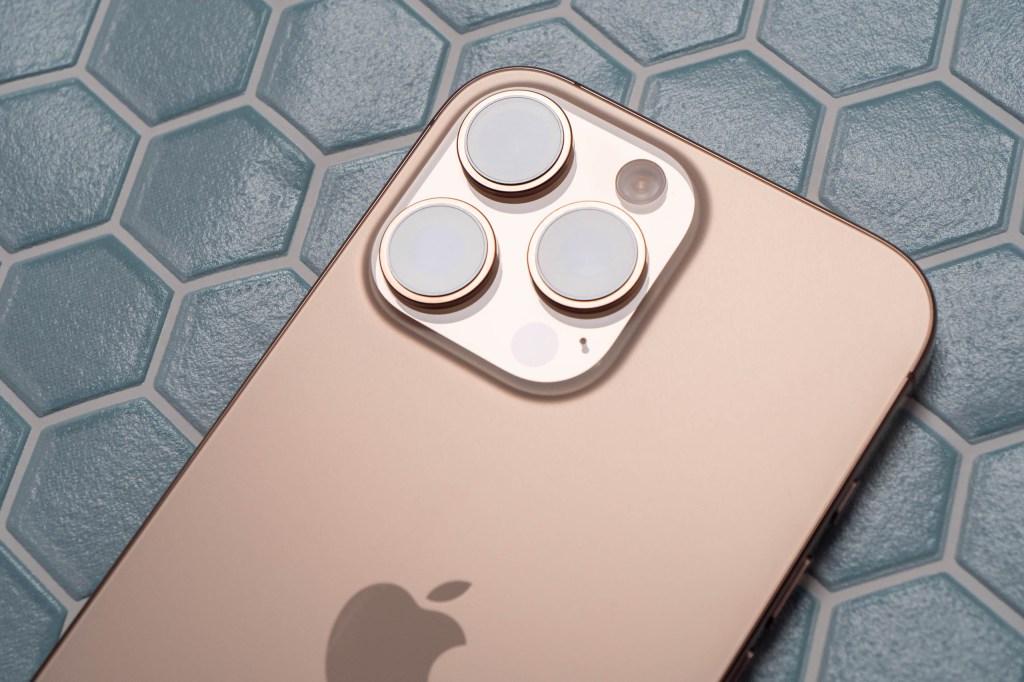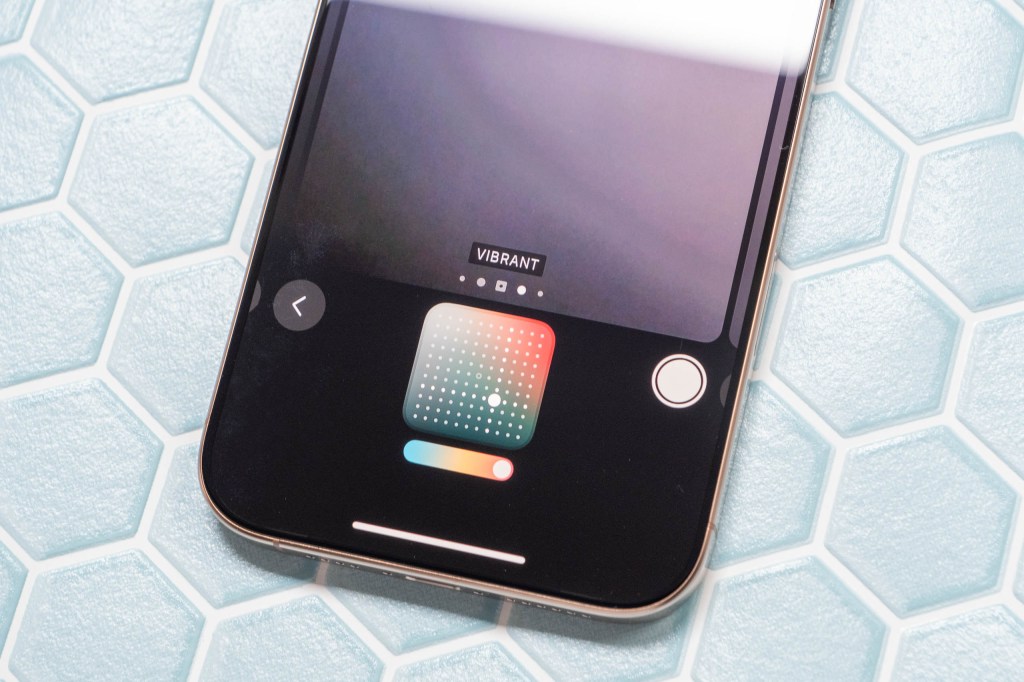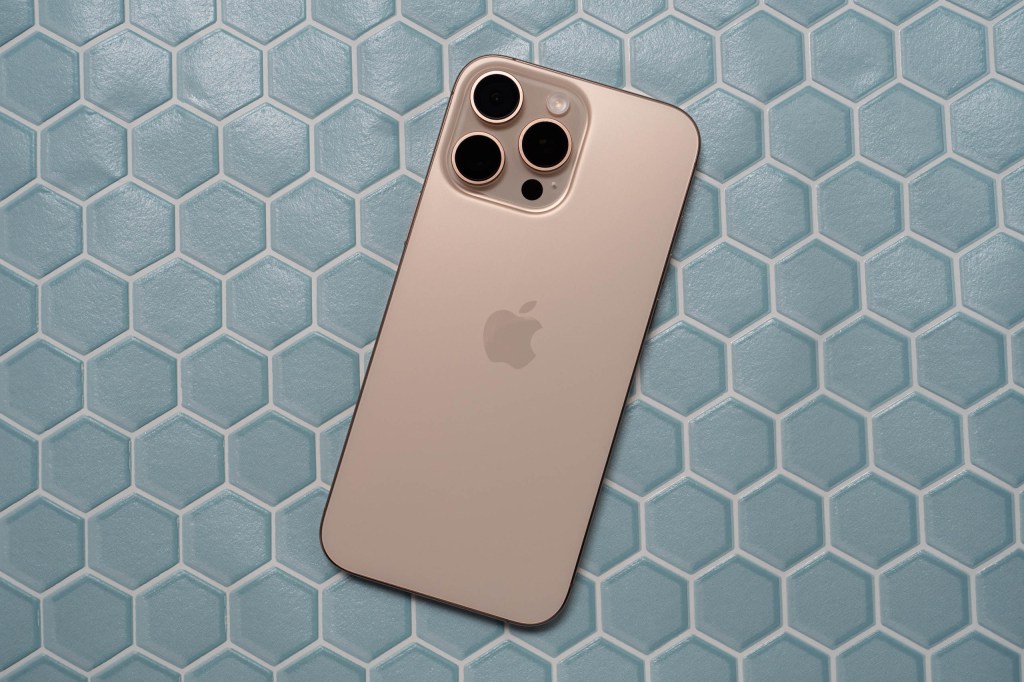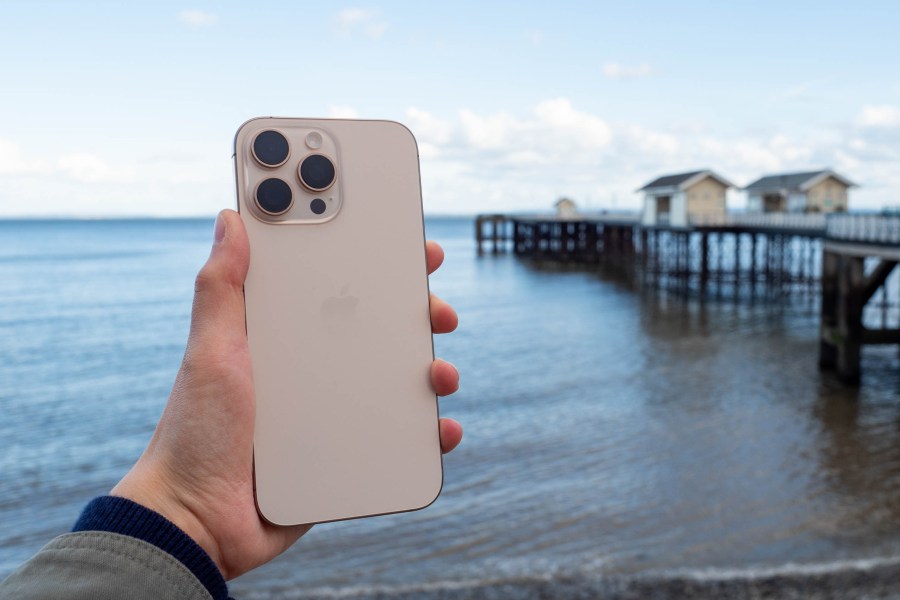Amateur Photographer verdict
Another well-performing camera setup from Apple, but it’s a gentle evolution rather than full-blown upgrade. The huge screen will appeal to some – but not to others.- Pictures / videos look great on the huge screen
- New camera control button
- Image quality very good overall
- Expensive base price
- Low resolution telephoto camera
- Low resolution selfie camera
Here we test the iPhone 16 Pro Max to find out if bigger than the iPhone 16 is better – or if less is more. The 16 Pro Max is bound for our list of the best phones for photographers, but the real question is, how much better is it compared to older models – are the improvements over its predecessor enough to be worth the investment for phone photographers?
iPhone 16 Pro Max at a glance
- 48MP wide camera, f/1.78 aperture, 24mm equivalent
- 48MP ultrawide camera, f/2.2 aperture, 13mm equivalent
- 12MP 5x telephoto, f/2.8 aperture, 120mm equivalent
- 6.9” Super Retina XDR OLED screen
- Titanium chassis
- iOS 18
- Processor: A18 Pro Chip
The iPhone 16 Pro and iPhone 16 Pro Max share an identical camera set up. So this review, just like our iPhone 16 Pro review, can actually be considered a review of both models: only the screen / size is different. Both models have the 5x zoom, where previously you had to buy the bigger iPhone for that – good news for anybody who wants the longer zoom and also a choice of screen sizes.
The big news for the iPhone 16 Pro models was the introduction of the “Camera Control” button, designed to give you the experience of shooting with the iPhone as if it were a “real” camera”.
Otherwise, much of the camera specifications are very similar to last year’s iPhone 15 Pro Max.
Features
There’s a 3x lens setup, with a 1x, 0.5x ultrawide and a 5x telephoto lens. The only major difference between the iPhone 16 Pro Max and the iPhone 15 Pro Max is that the ultrawide lens now has 48MP rather than 12, bringing it in line with the 48MP sensor. The telephoto sensor remains at 12MP.

Disappointingly, we’ve also got the same selfie set up as seen in the iPhone 15 Pro series, meaning there’s a 12MP f/1.9 device with AF – that’s pretty low resolution compared with other flagships, including the Google Pixel 9 Pro XL.
Other specs to take note of include USB-C charging, three different storage options, and the ability to charge wirelessly and quickly.
Handling and Design
With its 6.9-inch screen, the iPhone 16 Pro Max is a whopper. It’s larger than its predecessor, and is starting to verge on “small tablet” territory – sometimes known by the unpalatable name of “phablet”. Some people like these huge devices – and while I can’t deny that they’re great for viewing your shots and video, it’s very unwieldy for use as an actual phone. I much prefer the 6.3-inch screen of the iPhone 16 Pro, but this is a subjective opinion and you may feel the opposite.

The design follows the same iPhone playbook we’ve seen for a few years now; boxy with rounded edges and a flat screen. The new colour variation for this year is Desert Titanium, which is a pretentious way of saying “matte gold”, but it’s quite nice. I’d rather see the brighter colours offered by the iPhone 16 series, but there we are. If you’re using a case – which I’d generally recommend despite the phone’s tough credentials – it doesn’t really matter what colour it is after all.
Those tough credentials include IP68 water and dust proofing, a Titanium chassis and a ceramic screen. I haven’t stress tested this phone to the extreme, but the last one has survived a year of being bashed around fairly well so I assume the same will be true.

The “Action Button” – a new feature for last year’s iPhone 15 series – can be set to launch the camera. But, you may not want to do that as you now have the “Camera Control” button as well. With this, you can launch camera, but also take a picture, zoom and move between different settings. The positioning of this button is supposed to make it make you feel like you’re shooting with a proper camera, but I don’t particularly like it – personally I’m used to using the screen and don’t have a problem with it. Perhaps I will come to like it more as time goes on, but I don’t find it particularly comfortable, and it’s next to useless when you’re shooting in portrait mode, something which we’re all doing more and more of.
Native camera app
If you like things simple, then the straightforward nature of the iPhone’s native camera app will likely appeal to you.
The standard Photo mode will see you good for the majority of your shots, where you can access all the lenses and shoot in raw format. It’ll also automatically detect people and pets for portrait-effect shots without you having to move to the dedicated Portrait mode too, which is useful for erratic subjects.

Night mode is automatically activated should you be shooting in low light. You can’t manually switch it on, which is a shame as occasionally the iPhone gets confused about what should be recorded with it and what shouldn’t – but it’s not a huge problem.
A new feature for the iPhone 16 models is the latest generation of Photographic Styles. These have been around for a while, but you’ve now got greater scope for editing and adding and removing styles even after you’ve taken your shots. It should be noted that you’ll only be able to add or remove a style if you shoot in “HEIF” (High Efficiency Image Format), which is something I generally recommend anyway to save space.

Apple Intelligence is supposed to bring a set of new functions for photo editing. However, Apple hasn’t introduced it yet. I will update this review once it becomes available, but early reports from the Beta suggest it won’t be anything we haven’t already seen implemented elsewhere – such as the ability to remove unwanted elements of a picture, a la Google’s Magic Eraser.
Image Quality and Performance
As the camera setup is the same in this model as with the smaller iPhone 16 Pro, I’ve already examined in quite some depth the capabilities of the camera in that review.

The big takeaway is that although image quality is great, there has been no noticeable major improvement from the iPhone 15 Pro Max, and Apple is being overtaken in some areas by its Android rivals, too.
For example, the ultrawide lens now has a 48MP sensor. You might reasonably expect that to result in greater detail being shown, but it’s hard to see any obvious differences in the same scene shot with the old and new models. It’s also still being output at 12MP, rather than the 24MP default output of the 1x lens, which also has 48MP.

Portrait mode produces some reasonably nice results, with fairly natural bokeh and drop-off, but again, it’s about as good as it was last year, too.

Meanwhile, macro mode, once one if the iPhone’s key selling points is now only doing a reasonable job compared to others out there. It uses the ultrawide angle to get close to the subject, and while the results are pretty good – something like the Xiaomi 14 Ultra, which uses the telephoto lens for macro, does a much better job.

Low light shooting yields some nice results, with plenty of detail and good exposures. Again, this is now nothing special however, with comparable results from both older Apple models and competing Android flagships.
You can see lots more sample images in our iPhone 16 Pro review, which uses the exact same camera setup.
Value for Money
If you want that massive 6.9-inch screen, you’re going to have to pay a pretty penny for it.
The cheapest iPhone 16 Pro Max will set you back $1,199 / £1,199. Unlike the smaller iPhone 16 Pro, there’s no 128GB option to save you a bit of money: the base storage starts at 256GB for the Max variant.

For even more storage, you’ll pay $1,399 / £1,399 for the 512GB version and $1,599 / £1,599 for 1TB. I can’t imagine who needs 1TB of storage on their phone, but there…
This might sound like a lot of money, and it is, but it’s comparable with other flagship Android models, and in fairness to Apple, it hasn’t put up its prices for a few years now, so it’s no longer more expensive than anybody else (in fact, sometimes it’s cheaper).
It’s always worth remembering too that Apple phones hold their value very well, so when you come to trade it in or sell it on, you’ll likely get more back for it than you would with other brands.
That said, a phone which offers relatively little in the way of improvement over the previous model is arguably not very good value for money at all if you already own an iPhone 15 Pro Max. For those users, I’d probably advocate sticking with what you’ve got – at least until the 17 Pro Max.
Verdict
On the whole, the iPhone 16 Pro Max offers great image and video quality for photographers, but, it’s safe to say that the improvements over the iPhone 15 Pro Max are few and far between.
Aside from an increase in resolution for the ultrawide camera and the new generation of Picture Styles, there’s not a lot here to recommend it over sticking with your iPhone 15 Pro Max if you have one.

There’s the new Camera Control button, and there’s even bigger screen before. I would argue that the Camera Control button isn’t necessarily, and the larger screen makes the phone harder to use – but others will feel differently and that’s something I am happy to accept.
If you’re coming from an older model, such as an iPhone 12 Pro, or an iPhone 13 Pro, then jumping to the iPhone 15 Pro Max (or iPhone 15 Pro if you prefer more sensibly sized phones), makes a lot more sense, but otherwise this is very much a soft evolution of the iPhone.
There’s still disappointment aplenty too. Why isn’t there a better selfie camera? Why is there still no Pro mode? Why don’t we have three high-resolution sensors… all these reasons are why Android is pulling away at high-speed from iPhone.
Of course, all of that simply doesn’t matter if you just like iPhones and the Apple ecosystem. If that’s describing you, then yes, this is the best iPhone ever made, and you’ll likely be very happy with it.

Follow AP on Facebook, X, Instagram, YouTube and TikTok.
iPhone 16 Pro Max Specifications
| Main camera | 48MP (24MP default output), 24mm, f/1.78, OIS |
| Ultrawide angle camera | 48MP (12MP default output), 13mm, f/2.2 |
| Telephoto camera | 12MP 5x telephoto, 120mm, f/2.8, OIS |
| Selfie camera | 12MP f/1.9 with AF |
| Video | Up to 4K 120fps |
| Screen | 6.9-inch XDR Super Retina OLED, 2368 x 1320 pixels, 460ppi, 2000 nits max brightness |
| Battery | 4685mAh (33 hours of video playback) |
| Processor | Apple A18 Pro Chip |
| OS | iOS with 7 years of updates |
| Dimensions | 163 x 77.6 x 8.25mm |
| Weight | 227g |








